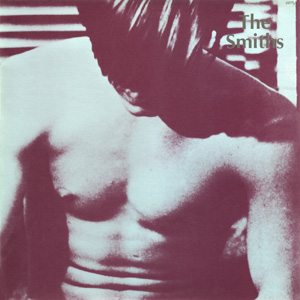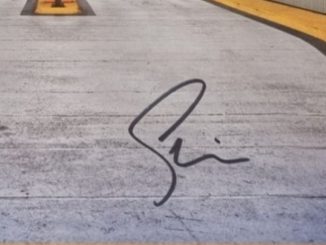On June 18, 1948, Columbia Records introduced an innovation that would transform the music industry. That day at Manhattan’s Waldorf Astoria, Columbia introduced the long player – the 12″ album.
The following year, a recent graduate of Pittsburgh’s Carnegie Institute of Technology packed up and moved to New York City. His arrival wasn’t announced via a press conference at a fancy hotel, but the young illustrator would change the art world as dramatically as the LP changed the record business.
And so it is that the history of album covers and Andy Warhol are intertwined. Over the next 38 years, Warhol would create more than 50 sleeves for LPs, EPs and singles. Among those are a pair of the most iconic album covers of all time: the Rolling Stones‘ Sticky Fingers and the banana sleeve of The Velvet Underground & Nico. Three of Warhol’s sleeves appeared on gold records and another two of the albums went platinum, making them among the artist’s most widely distributed works. On the other end of the spectrum, some of Warhol’s early covers are among the most collectible records in the bins.
In the catalog that accompanied the exhibition Warhol Live: Music and Dance in Warhol’s Work at the Montreal Museum of Fine Arts, the author writes:
Andy Warhol’s record covers are the embodiment of one of the greatest Warholian paradoxes. The artist renowned for returning ordinary, everyday objects into artworks, such as the soup cans blown up reveal their aesthetic qualities, then pursed the opposite course by designing artworks for mass consumption.
In other words, Warhol brought the art of marketing into the museum universe of fine art, and he brought fine art to the lowbrow world of marketing. He wasn’t the only fine artist whose work made it to the 12″ square (Salvador Dali comes to mind) but Warhol was unique both in the sheer volume of sleeves that he created and the fact that so many of his album covers were specifically designed as such rather than just a reuse of existing works.
Apparently young Warhol got into the album cover business in the simplest of ways: he called up record labels and said, “I’m Andy Warhol, I’d like to do a record cover you.” His first commission came that first year in New York for 1949′s A Program of Mexican Music. Over the next 18 years, he designed more than 30 jackets for classical, jazz and spoken word albums before moving into rock with the Velvet Underground & Nico record, which featured a peel off banana sticker. This is the first of a series of three “discovery” album covers he made, the other two being Sticky Fingers (with a working zipper) and John Cale‘s 1972 The Academy in Peril. Cale’s album cover appears to show 25 slides arranged in a grid, but each slide doubles as a window that can be opened to reveal an image beneath — a sort of John Cale Advent calendar.
During the ’60s, Warhol’s interests expanded beyond visual art into other areas. He also produced the Velvet Underground & Nico album, for example, and began producing films, too. Most of these movies were too avant garde for mainstream consumption (the five-hour Sleep, for example, which is exactly what the title suggests), but during the late ’60s, a run of Warhol-produced films directed by Paul Morrissey became cult classics.
Among these was 1968′s Flesh, starring a young man named Joe Dallesandro as a New York City hustler. As was often the case with Warhol’s “superstars,” Dallesandro sort of wandered into the artist’s orbit. The show catalog describes their meeting like this:
In 1967, Warhol was filming ‘The Loves of Ondine’ in an apartment in Greenwich Village rented for the occasion. Joe Dallesandro, there to visit someone living in the building, entered by mistake. This chance encounter resulted in a significant collaboration. ‘Flesh’ tells the story of Joe, a newlywed who prostitutes himself so he can pay for the abortion of his wife’s new girlfriend. The movie features nude scenes performed very naturally by a cast of amateurs.
Dallesandro starred in five more Warhol-produced films and dozens of movies beyond that. He even popped up on episodes of ’80s TV shows like Miami Vice and Matlock, making the actor one of the most recognizable faces in alternative cinema. His good looks and sexually explicit roles made him a favorite in the gay community, too.
You can read the rest of this article by James Stafford at DiffuserFM
You can buy Smiths rare vinyl, CDs, merchandise, memorabilia and more at eil.com





Be the first to comment